|
Some of Singapore’s ubiquitous HDB blocks have been jazzed up with interesting designs and murals, but this particular endeavour is quite unusual. I found these eye-catching wall paintings which recall different periods of Chinese history for residents of Simei estate. The word "Simei" means "four beauties" in Chinese. Indeed, when mentioning Simei, one tends to think of the Four Great Beauties: Xi Shi, Diao Chan, Yang Guifei, and Wang Zhaojun - legendary characters in Chinese classical literature. According to local archives, the government had planned to name four roads in the estate as “Guifei Road”, “Diaochan Road”, “Xishi Road” and “Zhaojun Road”. Unfortunately these names are quite the tongue-twister for non-Chinese residents, and so they later settled for Simei Street 1, 2, and so on. Even though the authorities eventually did not name the roads here after the four beauties, you can find murals of them at the HDB void decks in Simei. Look beyond the beauty, the murals of the four beauties sitting at Simei HDB void decks have certainly altered the void decks scene by injecting this area with a little more culture and history. 我最近在本地染上了追 “壁画风”,到许多邻里社区拍摄祖屋底下的壁画。今天我就来到了东部的四美区,而且很意外地发现当年新加坡建成新镇 “四美”,是为了纪念中国古代四大美女的:西施、貂蝉、贵妃、昭君,各有不凡的气质。据说,在新加坡发展初期,确实是以四大美人的美人芳名命名街道的,更有温柔余韵,而且还能凸显社区的不同魅力。但对于不懂中文的人,实在过于拗口。于是,政府便依序以四美一街至四街重新命名,也就是:四美一街、四美二街、四美三街、四美四街等。在“组屋”底层,分别绘制了这四大美人的壁画。每幅壁画绘着美人半身像。贵妃把盏醉酒、貂婵月下焚香、昭君怀抱琵琶、西施纤手浣纱,画面栩栩如生,人物身份一目了然,别有韵味。 The four great beauties of ancient china are famous, or perhaps infamous, because they were able to influence emperors and kings, with whom they were involved. In some cases, they brought kingdoms, even dynasties, to their knees. For most of them, however, their lives ended in tragedy and/or mystery. 这古代四大美女都具有倾国倾城之美貌,但是,自古以来美人不胜枚举,为什么她们四个能位列 “四大美女”?其实,美貌只是其中一个原因,最重要的原因是,四大美女都不同程度地影响了时局,她们的男人权倾一时,而她们最终无一例外都成为男人的牺牲品。这四个女人的命运都很悲惨,人生以悲剧收场。如果用一个成语形容她们,“红颜薄命” 再合适不过了。 Yang Guifei was the favourite concubine of Tang Dynasty Emperor Xuan Zong. She enjoyed a life of extravagance. However, she eventually became a victim of courtly intrigue and was forced to commit suicide. Her legendary romance with Emperor Xuanzong inspire many writers to tell her story that last for centuries. 杨贵妃,起先嫁给了唐玄宗的儿子,被唐玄宗看上后,又把她纳为自己的妃子,并对她三千宠爱于一身。战乱之中,在将士的逼迫下,唐玄宗为了自保,就赐死了杨贵妃,这也就是著名的“马嵬坡之变”。还有一种说法,杨贵妃压根就没死,唐玄宗派人把她送到了日本,并终老于日本,现在日本还有杨贵妃的墓地。但这毕竟只是传说,杨贵妃被赐死的可能性最大,也最容易让人接受的。 Diao Chan, was a character in the book, Romance of the Three Kingdoms. Unlike the other three beauties, however, there is no known evidence suggesting Diao Chan's existence; she is mostly a fictional character. Diao Chan plays an important role in the Romance of the Three Kingdoms. Her story, which is still well-known today, tells how two allies were so blinded by a pretty woman that they became enemies, one intent on destroying the other. She outwitted two conspirators who were plotting to overthrow the kingdom. Unfortunately, Diao Chan was put to death by surviving members of the enemies' clique. 这四大美女中,只有貂蝉在历史上找不到任何影子,也就是说,貂蝉是历史小说《三国演义》虚构出来的美女。当然,也是文学作品中塑造出来的一个非常成功的人物形象。在《三国演义》中,貂蝉的故事挺悲情的,她为了报答义父王允的养育之恩而甘愿献身完成连环计。貂蝉的美人计成功地让吕布和曹操变成了敌人。毕竟,自古以来,美女就是来配英雄的。当吕布被杀之后,貂蝉下落成谜,没人知道貂蝉去了哪里。也没有人敢确定,究竟是死了,还是被曹操遗弃,还是被关羽杀害,都没有定论。 Xi Shi was given to the Emperor of Wu by Emperor Gou Jian of Yue. While the Emperor of Wu was indulging in Xi Shi's beauty, Emperor Gou Jian conquered the state of Wu. Following the fall of Wu state, Xishi disappeared from public life. She lived in relative obscurity. Her story is unique in the history of China as no one has ever found fault with Xishi, even though she had caused the downfall of the state of Wu. 越国有一个叫西施的。因越国战败,越王勾践也成了吴国的人质,后被放回。之后,勾践为了报仇,就采用了大臣的美人计,把西施送给了吴王。虽然明知自己是枚棋子,但西施毫无怨言,因为她不仅是为了自己的国家,更是为了帮助她心爱的人。西施不辱使命,很快成为吴王的妃子,使得吴国国力衰弱,并被越国给消灭了。西施也就回到了越国,但西施的下落成为一个谜。 Wang Zhaojun has always been a tragic figure: a Han Dynasty court lady married off to a Chanyu (Khan) of the Xiongnu (Huns) who left her home and died in the far north. Perhaps this is because historically, a number of such women were so married in the interest of diplomacy. 王昭君离开家乡,嫁给了很远的匈奴人。在呼韩邪单于死后,她改嫁给了呼韩邪单于的长子,与父子二人分别生有子女。这这种复杂的关系对于汉族妇女而言,无疑是极其残酷的精神折磨,王昭君因此备受折磨,最终陷入抑郁而死。 These wall paintings at the Simei HDB void decks were put up effectively to retard the process of oxidation resulting from exposure to light and air. In addition to their artistic values, I feel that these paintings are today deemed as a treasure, containing not only the origin of the Simei estate in Singapore, but also extremely valuable information about the history of the four great beauties in ancient China, especially since their characters have been related in many books and movies for centuries. I consider these paintings priceless, and hope that they can continue attracting people to view them, both from the residents staying in Simei and residents in other estates.
今天在不少地方,可以看到各式各样的壁画,让原本平谈无奇的公共空间变得色彩缤纷,为社区及邻里增添不少亮点。我在游览四美组屋底层壁画的同时,从中也因此已了解中国历史上被公认为中国古代四大美女的传奇。我觉得这趟摄影集确实收获不少,难得可贵。希望大家如有空,不妨前往四美政府祖屋区走走,一览美人风姿。
1 Comment
Girish Vikas Naik
13/10/2020 11:57:20 am
Oh my, I lived in Simei for close to 6 years and did not even know what Simei meant let alone the murals deeply located in the HDB blocks. Thanks to you, I know both and visited yesterday. Now, it's onto Serangoon Central. Thank you once again.
Reply
Leave a Reply. |
Author
|

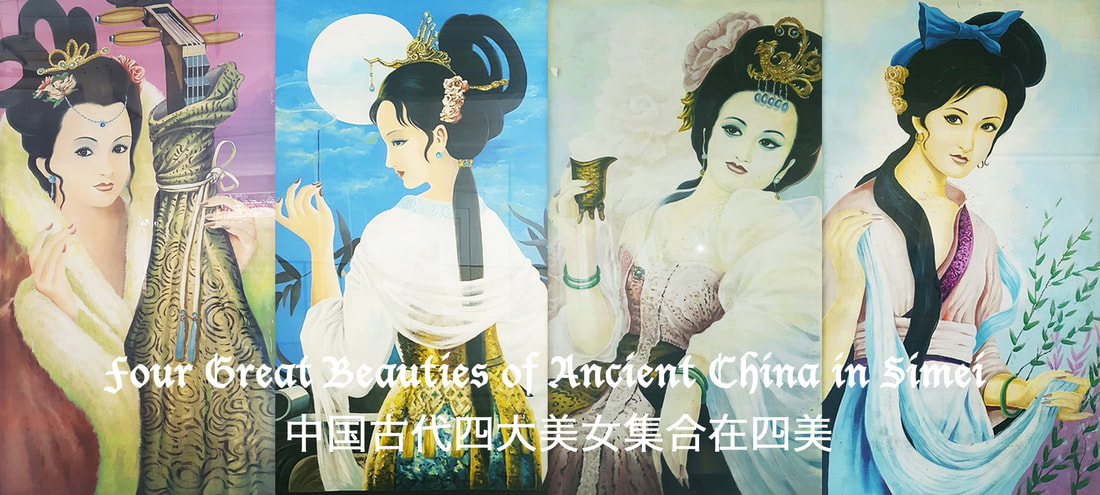
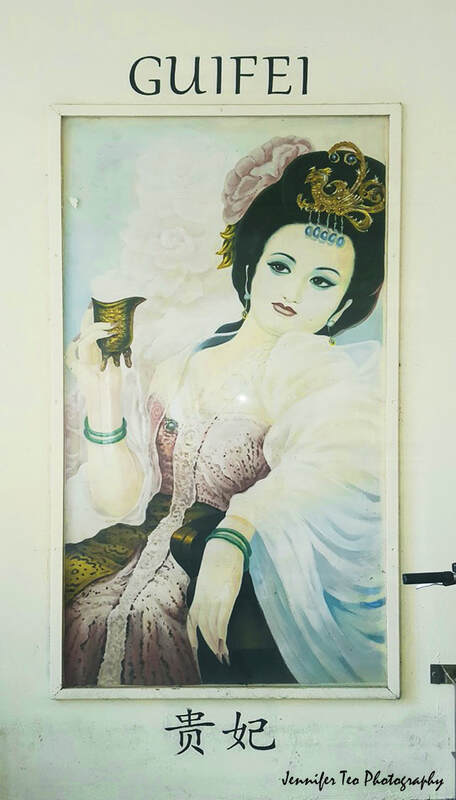
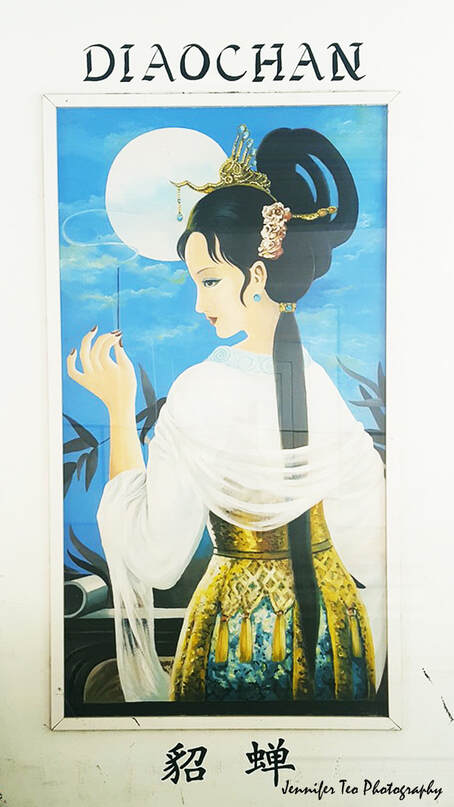
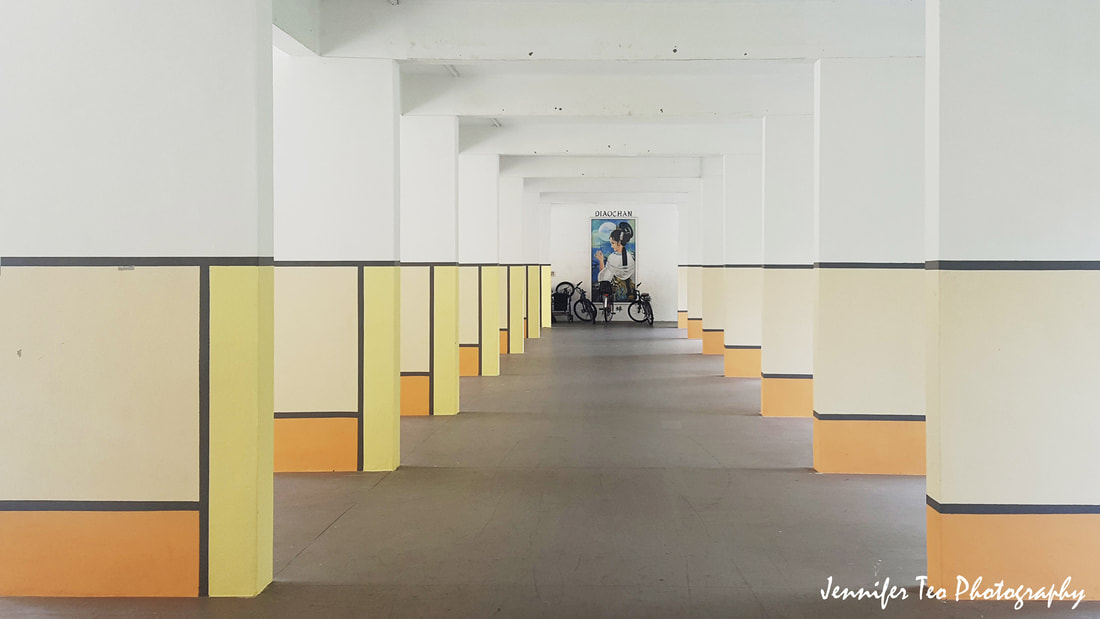
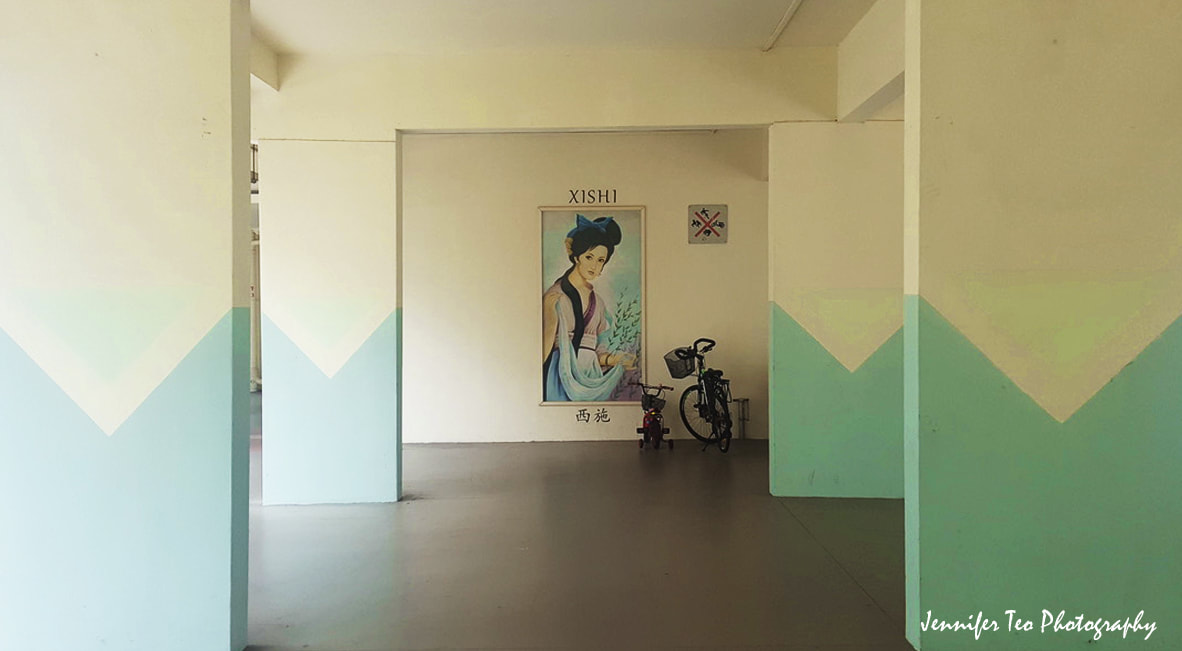
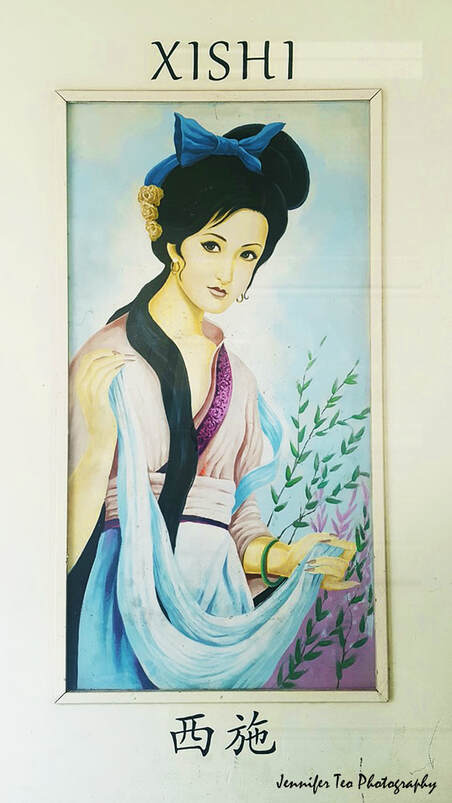
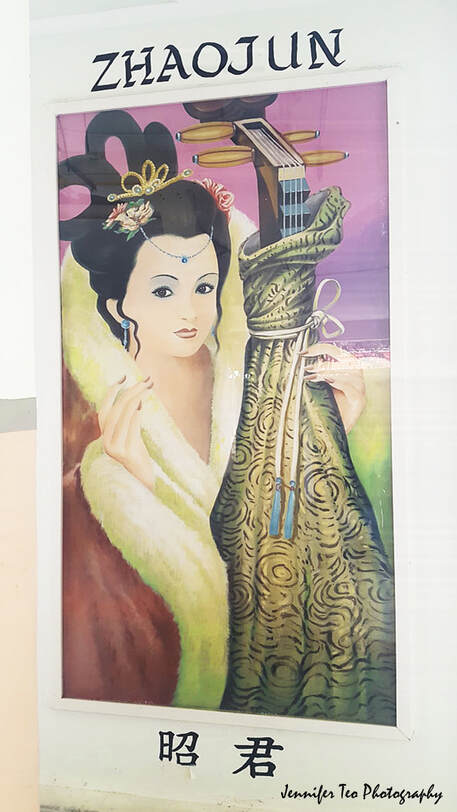
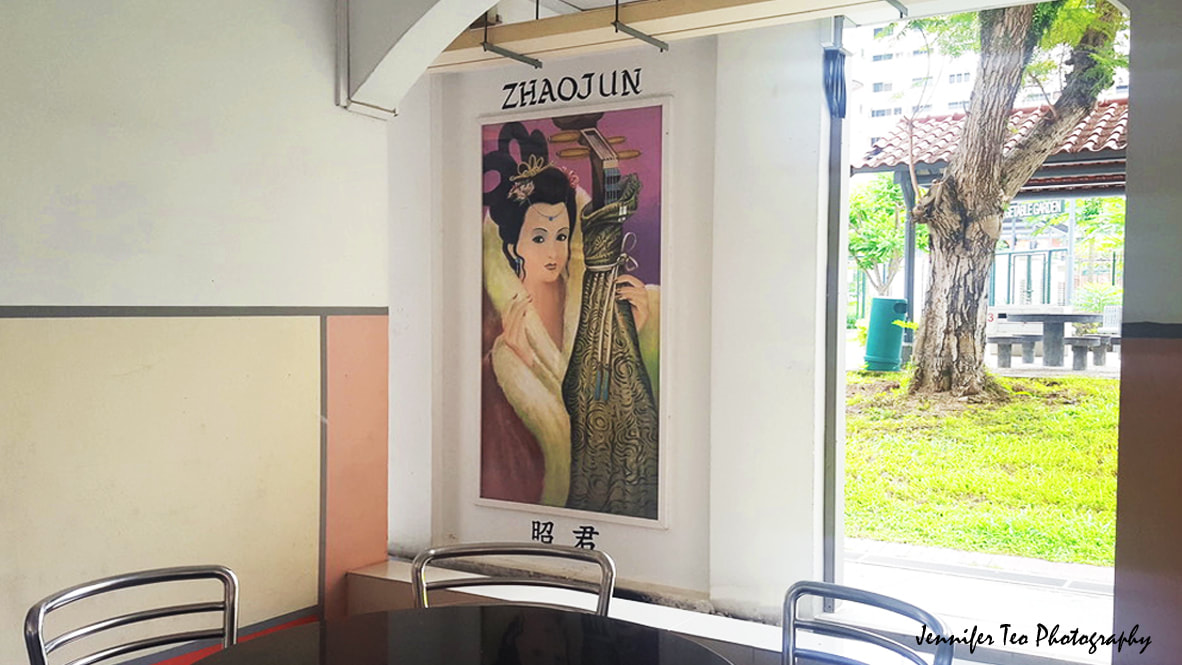
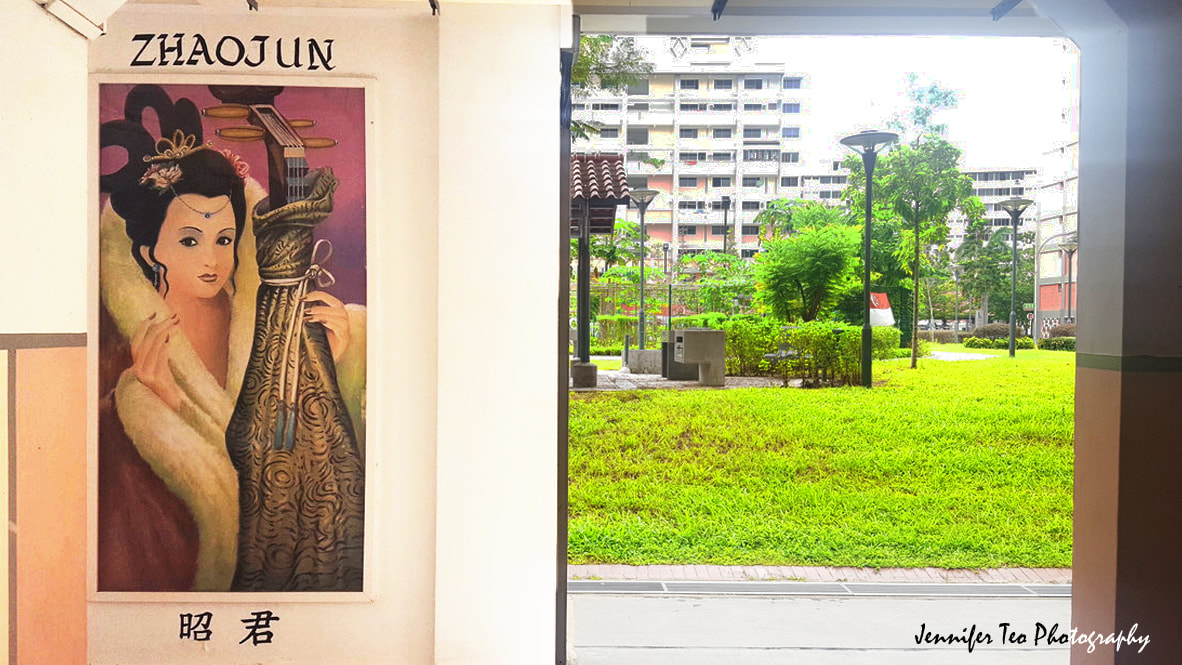

 RSS Feed
RSS Feed






